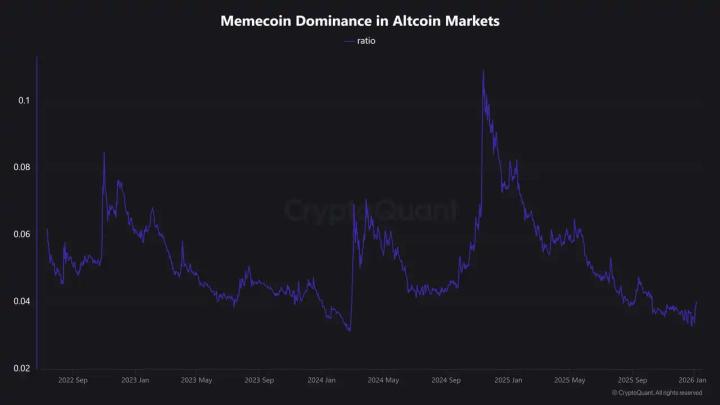1. The origin of the dispute: anti-fork BUSL
vampire attack
On August 26, 2020, on the basis of copying the Uniswap source code, Sushiswap added SUSHI Token to decentralize protocol governance to community users. The pilot article once discussed that the Liquidity Provider(Liquidity Provider, hereinafter referred to as LP) is the core role of the new Liquidity pool to realize the growth flywheel [1], so Sushiswap pointed at Uniswap at the beginning of its launch, and attracted Uniswap through SUSHI's Tokenomics design The core logic of LPs in the fund pool is to give SUSHI HODLers more rights and interests to achieve user retention.
Sushiswap's three-layer attack:
Zero-cost arbitrage - attracting users: LPs who provide Liquidity in the Uniswap fund pool can pledge their LP Tokens to the Sushiswap contract to obtain SUSHI tokens. The arbitrage cost is almost zero, so the market value of SUSHI has risen to nearly $300 in a short period of time M, attracted about $1.6B of LP Token [2].
Liquidity Migration - Converting users: LPs can propose their token pairs that provide Liquidity on Uniswap, and migrate to Sushiswap to continue to provide Liquidity, realizing the transformation of external users into LPs of their own agreement, which makes Sushiswap's TVL It once surpassed Uniswap and approached $2B.
Token Incentive LP - Retaining Users: Sushiswap charges 0.25% handling fee for LPs to distribute dividends, and at the same time absorbs 0.05% of funds to motivate SUSHI holders, so that users can not only obtain continuous agreement income after leaving the Liquidity pool, but also obtain The governance right of the project will retain the converted users as long-term supporters of the agreement.

Commercial Source Code License
Although Uniswap issued governance Token UNI and provided Yield Farming rewards for its capital pool, at the beginning of 2021 (Jan 1, 2021), Uniswap regained its position as the top DEX with a transaction volume of $26B, but Sushiswap also sold $1.3B followed closely by transaction volume. Considering the blessing of DeFi Summer at that time, the rise of Uniswap TVL cannot rule out the fact that there is a large amount of funds entering Crypto, and its market share is still eaten by a large part of Sushiswap, and a fork agreement is still (Feb, 2023) Ranking in the forefront of DEX with the fourth largest market share[3]…
Therefore, in order to prevent such attacks from affecting the stability of the protocol, Uniswap applied for a commercial source code license before V3 went online, except for contracts/interfaces/ and contracts/libraries/ under the GPL-2.0 or higher license, and MIT With the exception of licensed or temporarily unlicensed documents, the core code of Uniswap V3 is licensed under the Business Source License 1.1 (BUSL-1.1) [4], which stipulates that "since the date of change, or under this license, the first public distribution of specific After four years of licensed works, anyone can enjoy the Change License—GNU General Public License v2.0 or later, as well as the right to copy, modify, create derivative works, redistribute and non-productively use the licensed works[5] .In short, after the BUSL-1.1 license expires (Apr 1, 2023), anyone can deploy Uniswap V3 on any chain and make a profit. Therefore, this is the origin of the Uniswap governance turmoil, and Uniswap urgently needs Deploy protocols on BNB Chain to gain market share.
2. Review of the Cross-chain storm
Uniswap Governance Process
According to the Community Governance Process Update [Jan 2023] updated by devinwalsh in January 2023, the current Uniswap governance process is:
Phase 1: Request for Comment (RFC)
Phase 2: Temperature Check
Phase 3: Governance Proposal

According to the plan of ilia_0x, the proposer of Deploy Uniswap v3 (1 / 0.3 / 0.05 / 0.01) on BNB Chain (Binance) , the process of this proposal is as follows:
1. Discussion on Governance Forum / Twitter Space
2. Uniswap v3 + Governance Bridge Deployment on BNB Chain Testnet . Tests and Simulations.
5. Uniswap v3 Deployment to BNB Chain mainnet
6. Subgraph Deployment
7. Uniswap UI integration*
However, when the community passed the temperature check vote of Should Uniswap v3 be deployed to BNB Chain? with 20M UNI , 80.28%, the community was divided on the choice of Cross-chain tools. Different from Sushiswap, Uniswap currently mainly supports Ethereum and its Layer 2. Therefore, deploying the protocol on Layer 1 such as BSC requires the community to select Cross-chain tools to realize functions such as information transmission and asset transfer between chains. It revolves around Jump Crypto, Folius Ventures-backed Wormhole and a16z, and Sequoia-backed LayerZero.
Comparative analysis of Cross-chain tools
Wormhole is a Cross-chain data transfer protocol composed of 19 verification nodes endorsed by centralized institutions. Each node independently verifies Cross-chain transactions issued by smart contracts on non-EVM-compatible blockchain networks including Solana, and passes After 2/3 verification, the final transaction is completed on the target chain. Therefore, Wormhole's security design is essentially based on the game of human interests, rather than "code is law" in the underlying design: Compared with colluding with 2/3 verification nodes to do evil, these 19 institutions will pay more attention to their brands and Reputation, so joint evil rarely happens. In addition, the 22-year hacking incident did not originate from the evil verification nodes, and after the attack, not only did Jump Crypto behind Wormhole make up for the $300 million loss, but Wormhole also provided tens of millions of bounties to encourage white hats Hacker's Vulnerability Review.

However, Wormhole’s bridging requires the deployment of corresponding smart contracts on the two chains. When the number of bridges increases, the number of smart contracts increases exponentially, and the vulnerabilities of smart contracts are the main targets for hackers to attack Cross-chain bridges. LayerZero solves this problem. Each application only needs to deploy the Endpoint with one contract, and transmits the transaction proof and block header information to the target chain through the repeater and the oracle, respectively, and executes it after passing the verification of the Endpoint on the chain. LayerZero deconstructs Wormhole's 19-node intermediate layer through user-selectable repeaters and oracles, so only an attacker can launch an attack if they control both repeaters and oracles, and this attack is only available on the relay It works between the oracle machine and other Cross-chain communication is not affected. In addition, the protocol can choose repeaters and oracles by itself, so LayerZero gives the protocol higher autonomy than Wormhole.

Rethinking of Cross-chain after the turmoil dissipated
Facing the opposition of a16z 15M UNI , Wormhole finally withstood the pressure and became the final choice of the community with 55.88M UNI, 65.89% advantage. Even though LayerZero proposed the concept of Omnichain, the Cross-chain is no longer a one-to-one channel, but a one-to-many network, which greatly reduces the risk of contract deployment. However, if you only consider migrating Uniswap to the BSC chain, the risk of contract deployment is almost the same as that of Wormhole. On the contrary, for the Multichain ecological layout of Sushiswap, the advantages of LayerZero will be more obvious, and Uniswap chose Wormhole and chose LayerZero's Sushiswap also forms a risk hedge for Cross-chain tools. In addition, compared with Wormhole, LayerZero is actually "no endorsement". Instead, it uses a logic similar to Nostr to transfer the risk to the agreement. However, for a DEX with a daily trading volume of one billion US dollars like Uniswap, The risk is not as controllable as receiving a few spam messages. In contrast, Wormhole, which is endorsed by more than 13 top Crypto institution brands (accounting for more than 2/3 of the verification nodes), may not be less costly than LayerZero. And Jump Crypto, which spent $300 million to fill the loopholes, did provide another layer of insurance for Wormhole.
However, the support of capital cannot replace the change of technology. Although the ability to pay compensation is a positive factor, it is not the core of Cross-chain tools. With the collapse of the FTX building, trust in centralized institutions is also gradually disintegrating. Even though the cost of uniting more than a dozen top institutions to do evil is still terrible, it is indeed not trustless. And as an upgradeable contract, supporters of Wormhole, while criticizing the risks of LayerZero being non-upgradeable, must also be wary of hidden dangers in every upgrade. In addition, whether it is Wormhole or Layer Zero, it still lacks the ability to deal with 51% attacks on a single chain, and this will multiply the risk that should be controlled on a single chain. Therefore, although the choice of Uniswap has been settled, we should still be cautious about Cross-chain scenarios. Multichain, Cross-chain, and full-chain narratives and games are still going on...
3. Power Game under Decentralization
Although the confrontation between the two major investment institutions is enough to attract attention, what really brought the whole incident to a climax was the 15M UNI held by a16z, which made the community question the degree of decentralization of Uniswap. Uniswap V3 is deployed on Ethereum, and the core logic and functions of its contracts cannot be modified. Therefore, even if a16z or any capital really has absolute power over community proposals, there is no way to destroy the Uniswap protocol itself. Therefore, from the protocol From a perspective, Uniswap’s decentralized attributes are still beyond doubt.

However, as the public pays attention to the members of the Uniswap team from Chainalysis, the New York Fed, the New York Stock Exchange and other institutions, even if the contracts on the chain cannot be changed, the supervision is only limited to the front end, and users can still bypass Uniswap's front end and contracts. interaction, but the FUD sentiment did arise, from the idea of Uniswap V4: People began to worry that Uniswap V4 might be more inclined to give in to supervision than V3 and obliterate part of the spirit of decentralization[6]...
If we consider the worst-case scenario, the regulatory and capital layout may have been basically perfected today. Once the next-generation Uniswap protocol cancels the immutability, then there is a high probability that it will be controlled by UNI holders, and the potentially huge underwater Whales are still unknown to us. Even though Uniswap V1-3 will continue to be put into use, if the control of UNI , that is, the control of the community, is centralized or even monopolized, then through Yield Farming, AirDrop, etc., Uniswap V4 will be greatly improved. To absorb the Liquidity of the first three versions, on the one hand, it is the iron law of supervision, on the other hand, it is the tight Liquidity. What choice will traders make?
Although there are indeed risks at this level, judging from the actual situation of this turmoil, a16z's 15M and jessewldn's 8M are the two highest voting amounts on the chain, but they have not changed the final result. However, no one has a say until exhaustive research has been done on other holding addresses.

The essence of supervision is to prevent and punish evil behavior, but this will never be an excuse to hinder the progress of civilization...






